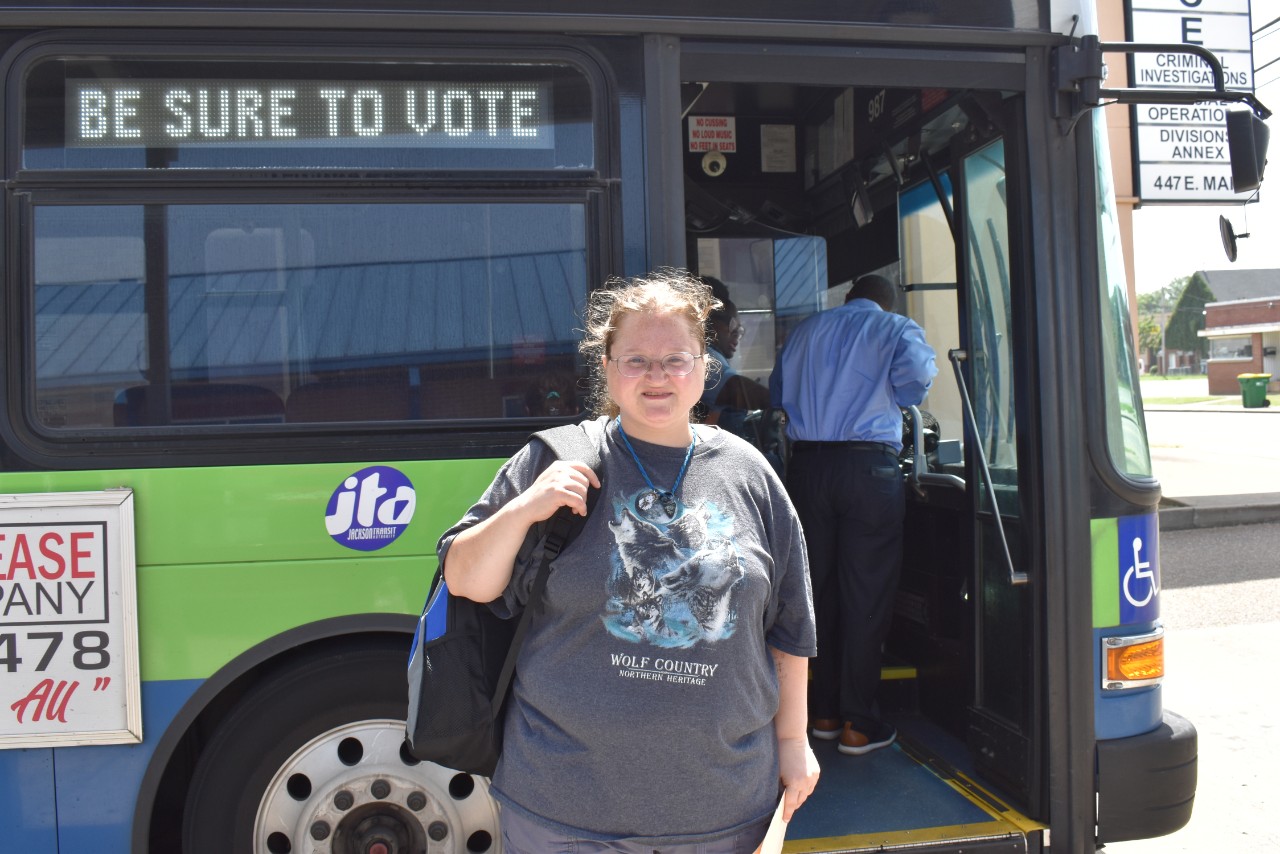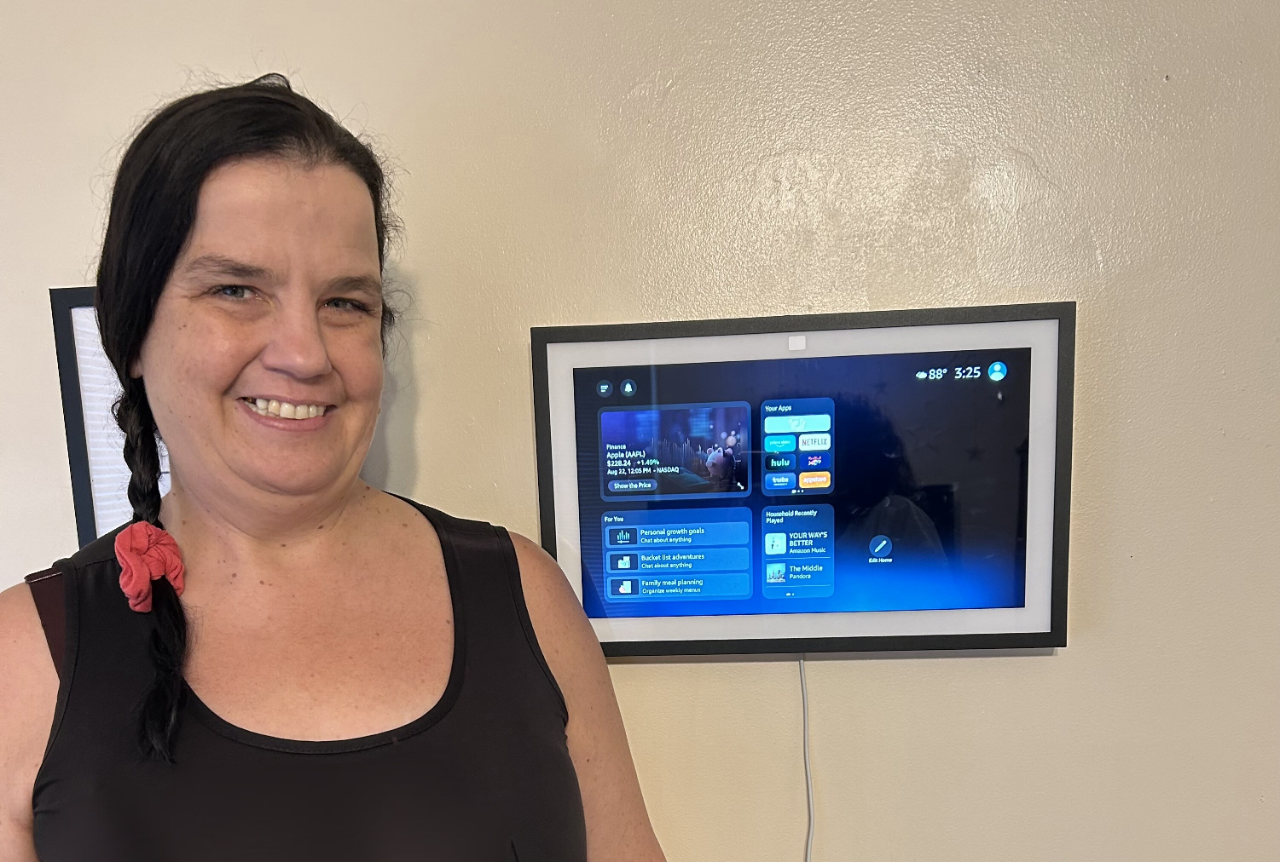The Flexible Residential Support Helping People Live Their Best Lives
By Jeremy Norden-Paul, TN Department of Disability and AgingFor the past two years, Jennifer Storey has been using different kinds of Enabling Technology to help her be more independent at home and in the community. For example, she uses devices to remind her when it’s time to wake up, get ready for work, and to take her medicine. She uses a Ring doorbell to know who is at her front door. She has other devices around her home to communicate with her support staff when she needs something.
In addition to using Enabling Technology, Jennifer has also been enjoying a lot more time by herself without support staff. According to Jennifer and her Circle of Support team, she is happier than she has ever been before. This change is thanks to Enabling Technology, flexible staffing, and people giving her a chance to show what she is capable of.

Vicki Kee is another person who uses Enabling Technology and flexible staffing to create the life she wants. She mostly uses a Ring doorbell, a couple of Echo devices, and her cell phone.
These devices help her feel safe and confident when her support staff is not around. She can see who is at the door and can contact her support staff when she needs something.
However, Vicki has become so independent that she almost never calls on them anymore. She takes public transportation to her job at McDonald’s, where she has worked independently as a valued employee for several years.

Many people with intellectual and developmental disabilities have direct support professionals (DSPs) in their homes around the clock. However, not everyone wants or needs staff all the time. People may also want more control and flexibility in how DSPs help them. Many residential service programs are not designed to provide this kind of flexibility.
To change that, the Department of Disability and Aging (DDA) created the Flexible Residential Support Model (the “Flex Model”), which Jennifer, Vicki, and others are now using.
What is the Flex Model?
The Flex Model is a type of residential service that you can choose to receive in your own home.
People who use the Flex Model decide when they want DSPs helping them in their home, and when they want to use other kinds of support:
- Enabling Technology
- Remote support, or
- Natural supports (friends, family, or neighbors)
You do not have to use Enabling Technology with the Flex Model, but many people choose to use Enabling Technology because it helps them do things more on their own. The Flex Model gives people the freedom to decide exactly how they want their supports to fit their life. Using the Flex Model is your choice, and you can switch back to your traditional residential service at any time.
Who is the Flex Model for?
You can use the Flex Model if you have Supported Living or Residential Habilitation services (Level of Need 2, 3, or 4) in one of DDA’s waiver programs*. Your Independent Support Coordinator (ISC) can explain your service type and Level of Need.
Your ISC can also help you decide if the Flex Model could be a good fit for you and help you achieve your goals.
In Their Words
Other people share what they love about using the Flex Model for their support services.
- “I feel like an adult because I can be home alone, and I can do what I want. I also enjoy spending time with staff, being able to plan my day, and them helping me get out and enjoy myself. …. I am living my best life ever. I have a job, a boyfriend, lots of friends, and a really busy life. I am an adult!”
- “Before technology, I was never alone in my house. I could not open the door, turn on my lights, control my TV, or have privacy in the bathroom or bedroom. Now technology allows all these things.”
- “Having Enabling Technology makes me feel good. I want to be normal and live like everyone else. I feel that with the technology I can eventually live with less staff support.”
How can the Flex Model help providers?
By sending DSPs when people want and need support, providers can be more creative and flexible. If a person needs fewer in-person hours, those DSP hours can shift to someone who needs more. Providers can use remote support tools (tablets, smartphones, smart home devices) to check in during the day. If someone needs more help, the provider can quickly send a DSP to their home.
Here is what some providers have said who are supporting people to use the Flex Model:
- “People who choose how their supports are delivered appear happier and express greater satisfaction with their lives.”
- “We have seen an increase in independence. People have started to do things on their own that we never thought possible.”
- “We now have remote support staff that provides services when a person needs them instead of being in the home ‘just in case.’ We can reallocate the staff that was with someone that now receives 8+ hours of support, to someone that needs that in-person support, or change their job tasks to include them as the remote support responder, if needed.”
- “The Flex Model has not resulted in anyone losing their jobs and instead has created promotional opportunity.”
How do I learn more about the Flex Model?
If you receive residential services from DDA, you can talk to your ISC about the Flex Model. You can also contact DDA, or or visit the DDA website to learn more about the Flex Model.
About the Author
Jeremy Norden-Paul is the director of the Division of Program Innovation for the Tennessee Department of Disability and Aging (DDA). His team develops innovative solutions to help people increase their independence and quality of life.
He has previously served as an elementary special education teacher, job coach, job developer, director of employment and day services for DDA, and executive director of the Washington State Developmental Disabilities Council. He is passionate about finding ways to make the system work better for people.